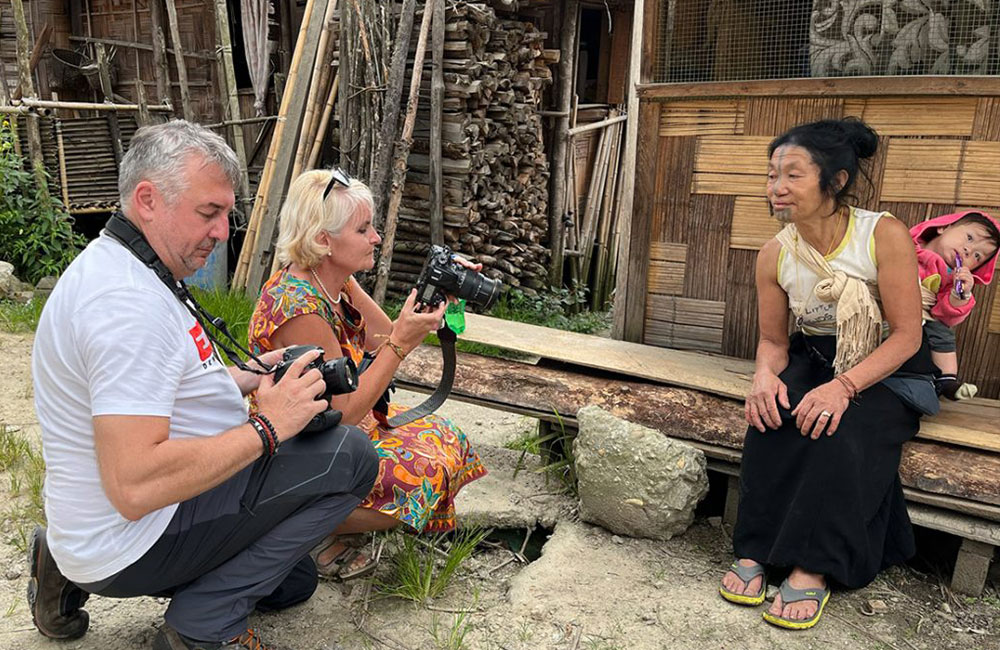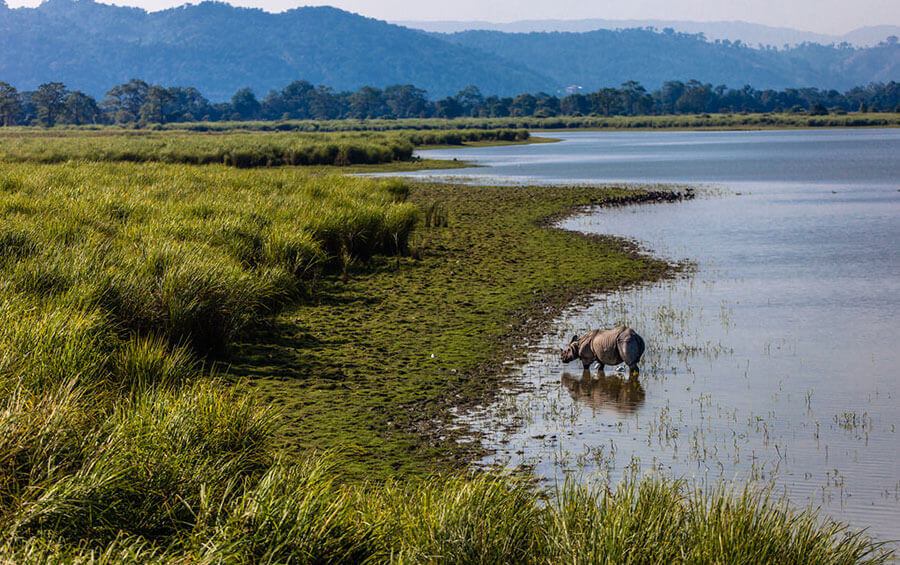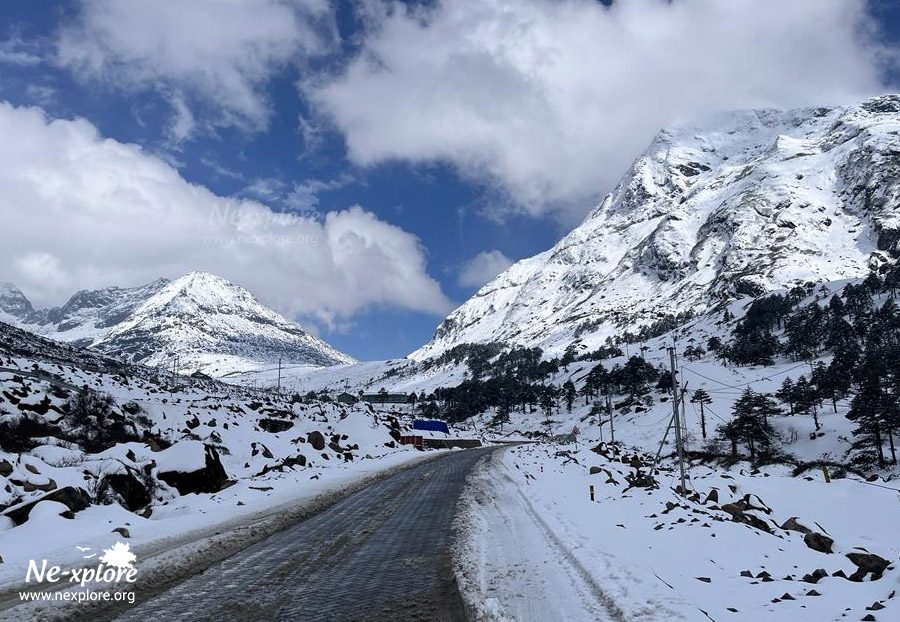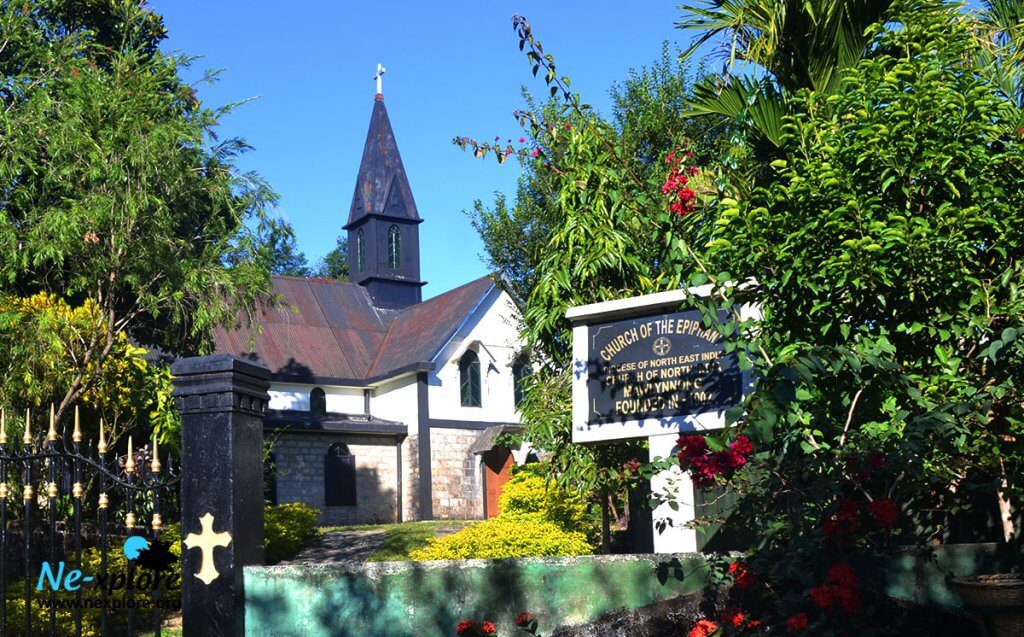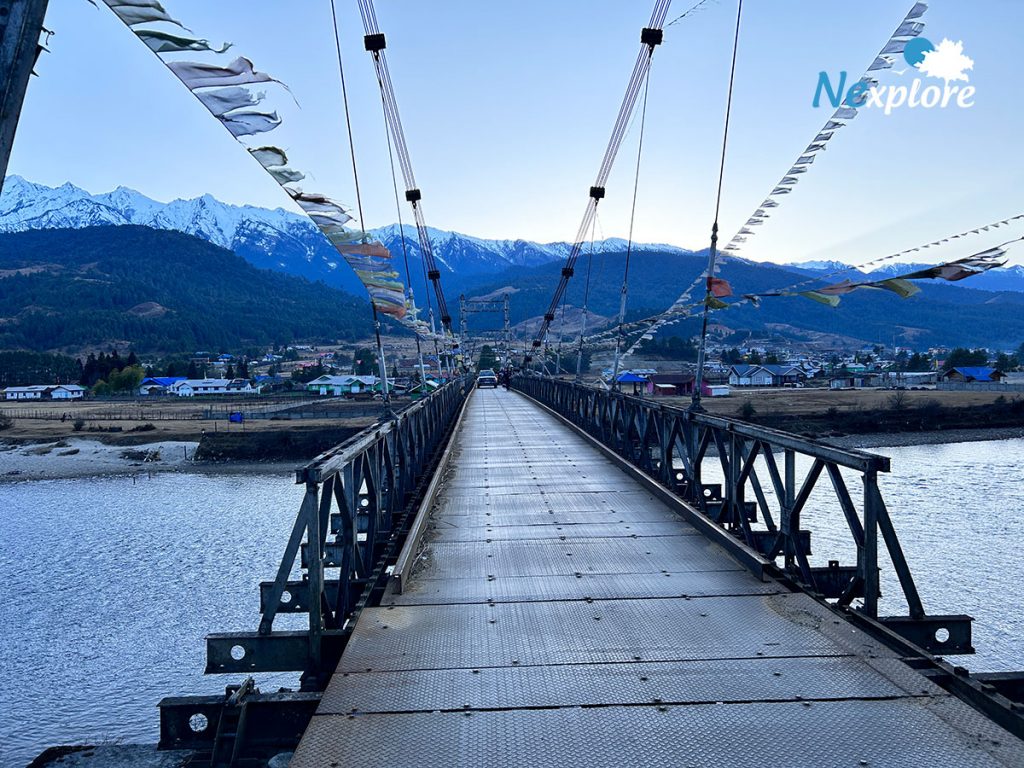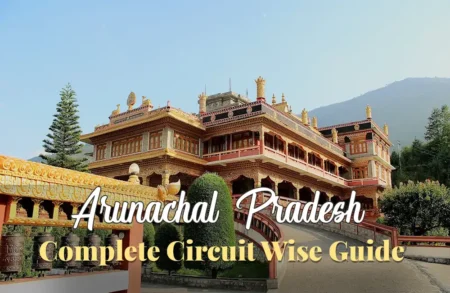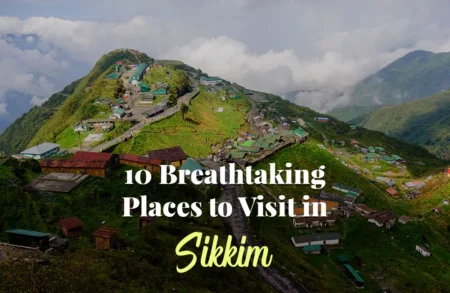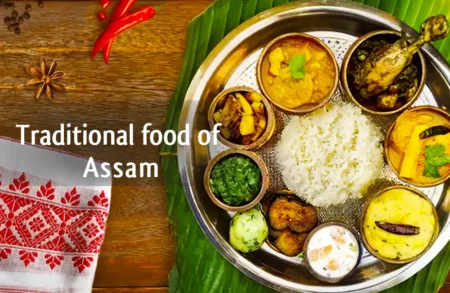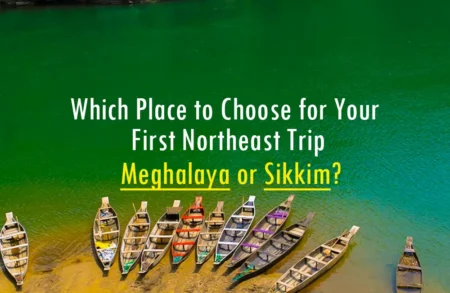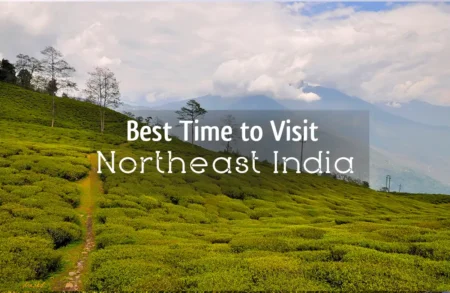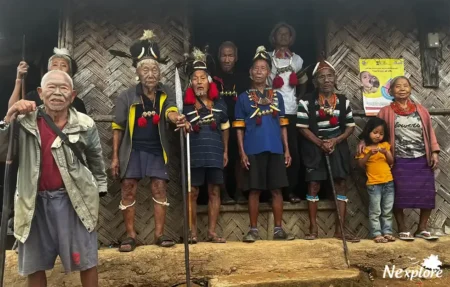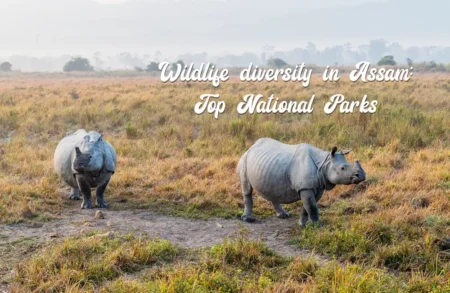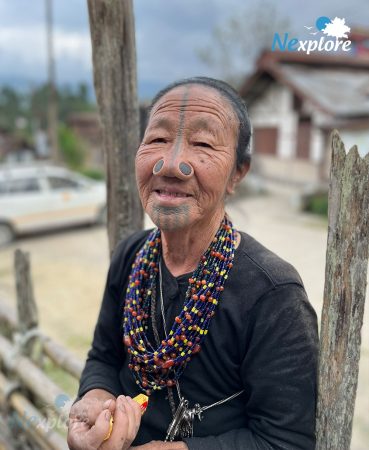
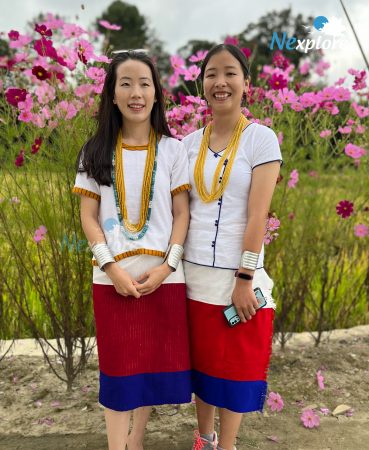
1. Ziro Valley, Arunachal Pradesh
Ziro Valley is a UNESCO World Heritage site and the home of the Apatani tribe, known for their distinct facial tattoos and traditional nose plugs worn by older women. Photography of the tattooed Apatani women is a perfect addition to your photography portfolio. The valley itself is a lush paradise, with scenic paddy fields, pine-clad hills, and bamboo houses, offering photographers stunning landscapes.
Traditional villages like Hong, Bulla and Hari villages are home to the Apatani tribe. The villages are notable for their well-preserved bamboo houses and intricate agricultural systems, including wet-rice cultivation and fish farming. The vibrant festivals, particularly the Dree Festival, provide opportunities to capture tribal life at its most colourful. The rich cultural heritage, combined with stunning high-altitude landscapes, makes these Apatani villages a top spot for cultural and landscape photographers.
The best time to visit Ziro Valley is during the Ziro Festival of Music in September when the valley comes alive with vibrant colours filled with golden hues. Check our Ziro Valley tour package to plan your tour in this valley.
2. Majuli Island, Assam

Located on the Brahmaputra River Majuli Island is the world’s largest river island and a major hub of Assamese culture. The island is predominantly inhabited by the Mising tribe, known for their colorful traditional attire and a lifestyle deeply intertwined with the river. Majuli is also famous for its Neo Vaishnavite monasteries, which add a spiritual depth to your photography. In these neo vaishnavite monasteries(satras) you can see the life of monks(bhakats), and witness the devotional dance performance and prayer performed by Bhakats. In Mask Makers satra (Samaguri satra) you can see the traditional mask-making art of Majuli followed and practiced by ages.
The Annual Raas Festival held at various Satras (monastic institutions) across Majuli Island is a fantastic opportunity for photographers to capture stunning images of the local culture. During this festival, monks and devotees perform Bhauna, a traditional dance-drama that depicts the life of Shri Krishna. The participants, dressed in colourful and ornate costumes, bring the stories of Krishna’s life to life through expressive performances, making for captivating portraits and action shots.
Beyond the Raas Festival, Majuli offers a range of other photographic opportunities. The island is renowned for its tranquil landscapes, particularly the alluring sunrise and sunset scenes over the Brahmaputra River, which provide beautiful lighting for landscape photography. Photographers can also document the simple life of the villagers, who maintain traditional ways of living. The island is home to skilled weavers, who use handlooms to create vibrant, intricate textiles. Capturing these artisans at work allows you to delve deeper into the local craftsmanship and cultural heritage.
Additionally, traditional fishing techniques practised by local tribes, such as using bamboo fishing traps, offer a glimpse into the island’s sustainable way of life. The island’s vibrant festivals and rituals, along with the presence of migratory birds during certain seasons, further enhance the visual appeal for nature and wildlife photographers. Majuli, with its rich cultural and natural offerings, is truly a photographer’s paradise.
Check How to spend a day in world’s largest river island Majuli
3. Hornbill Festival – the top destination for photography tours in Northeast
Kohima, the capital of Nagaland, is a splendid hilly town. It is home to Indigenous Naga tribes. The city comes alive during the Hornbill Festival which is held every year from 1-10 December. This event showcases the rich cultural heritage of all Naga tribes, making it a prime destination for photographers. You can capture the vibrant dances, traditional attire, and unique crafts displayed by all tribes of Nagaland as well as Assam, Manipur etc.. Set against the backdrop of Kisama Heritage Village, the festival presents endless photography opportunities, from dynamic portraits to grand scenes of traditional dance and food.
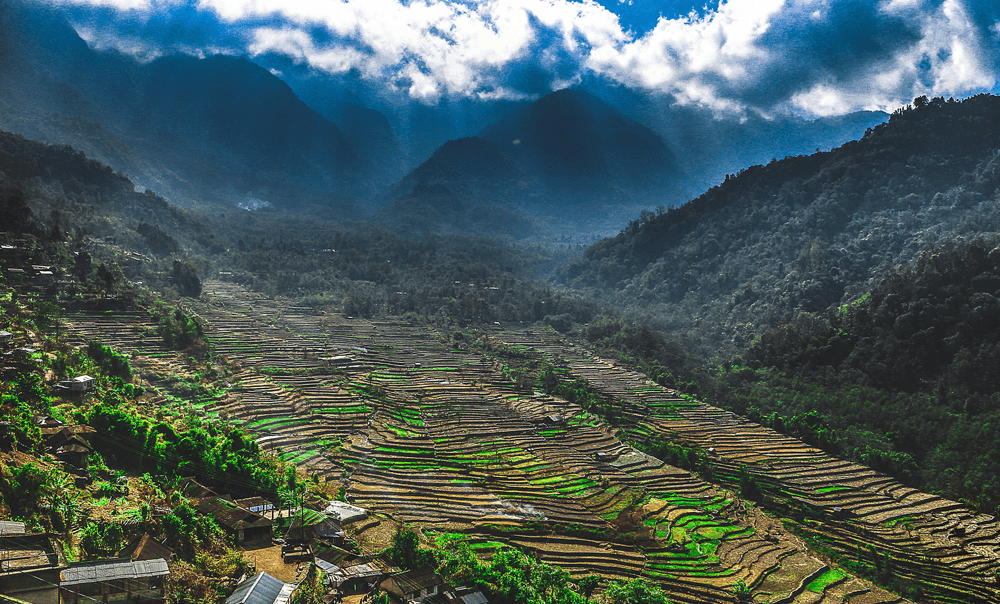
4. Khonoma Village, Nagaland
Known as Asia’s first green village, Khonoma is a must-visit for photographers interested in eco-tourism and conservation. The Angami tribe inhabits this village and is known for its efforts in forest conservation. It is like a dream village with various flowers and small allies and a steep hill in its backdrop. The village is surrounded by terraces carved into the hills, offering sweeping views that are perfect for landscape photography. Apart from its natural beauty, the people of Khonoma have rich traditions, and documenting their sustainable lifestyle is a rewarding photographic experience. You can also capture photographs of locals indulging in various activities like weaving, craft making etc. and meet them in person and understand their culture and value along with beautiful photos.
Beauty of Kaziranga
5. Kaziranga National Park, Assam
For wildlife photographers, Kaziranga National Park in Assam is a must-visit. This UNESCO World Heritage site is home to the world’s largest population of the Indian one-horned rhinoceros, along with tigers, elephants, and a variety of bird species. The park’s marshlands and grasslands provide a stunning backdrop for capturing wildlife in their natural habitat.
The park has 4 ranges which help in spotting wild animals. You can go for Jeep Safari and Elephant Safari in all 3 ranges of the park and take snaps of Wild animals. The park is generally open for tourists from 1st October to 30th May.
6. Konyak Tribal Villages, Nagaland
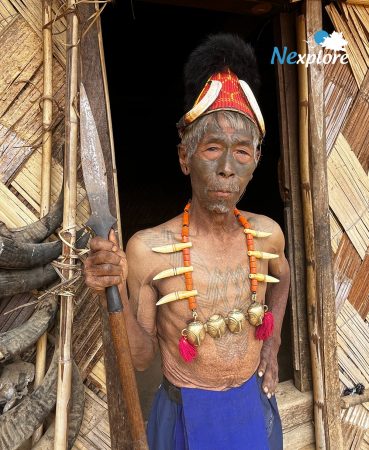
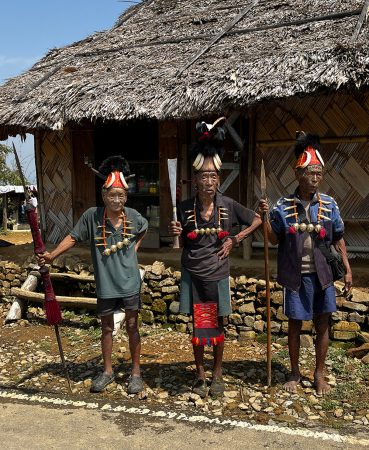
Konyak tribes of Nagaland are known for their ferrous head-hunting skills. The warriors who hunted the heads of their enemies enjoyed a special status in society and received facial tattoos. They are former headhunters, and many of the village elders still bear elaborate facial tattoos that narrate their warrior history. Though headhunting was banned now you can still meet and capture the last generation of tattooed headhunters which offers an unforgettable photography experience. You can visit the villages of Konyak tribes and meet them in person. Some of the prominent Konyak villages are Mon, Longwa, Hongphoi, Sumi etc.
Longwa village, situated on the India-Myanmar border, is a particular highlight where you can visit the home of the king(Angh), who rules over villages on both sides of the border. The region’s mountainous terrain and traditional wooden houses provide a raw, rustic backdrop for capturing the Konyak lifestyle. You can also visit the traditional Morungs (dormitories) and see the intricate wood carvings of these villages which provide a deep insight into the life of the Konyaks. Photographing the daily lives of the Konyak people against the backdrop of these remote, rugged villages is a truly immersive experience.
Check Trip to Longwa Village in Nagaland the home of last generation of headhunters
7. Tawang, Arunachal Pradesh
Tawang a picturesque town nestled in the Eastern Himalayas, is a destination of unparalleled beauty, rich in culture and spirituality. Located at an altitude of approximately 10,000 feet, it offers awe-inspiring landscapes with its snow-capped peaks, lush valleys, and serene lakes, making it a paradise for photographers and travellers alike.
The town is most famous for the Tawang Monastery, a majestic structure that is the spiritual heart of the region. Established in the 17th century, it is the second-largest Buddhist monastery in the world and the largest in India. This ancient monastery not only serves as a centre for religious learning but also provides an incredible opportunity for cultural photography. Photographers can capture the daily lives of the monks, from their peaceful meditations to their vibrant religious rituals. There are several other monasteries scattered throughout the region, each offering its unique charm. Urgelling Monastery, the birthplace of the 6th Dalai Lama, is a quieter yet equally photogenic location, where you can capture serene moments of devotion and spirituality.
For those seeking natural beauty, Tawang doesn’t disappoint. The town is surrounded by spectacular waterfalls, such as the Nuranang Waterfall, a thundering cascade that plunges into a serene pool, ideal for both landscape and nature photography. Sangestar Tso Lake, also known as Madhuri Lake, is another must-visit destination. Its pristine waters reflect the snow-capped mountains, providing breathtaking photo opportunities during both sunrise and sunset.
Tawang is also home to the Monpa tribe, an indigenous community known for its rich cultural heritage. The Monpa people are deeply connected to Tibetan Buddhism, and their religious festivals, such as Losar, Torgya are vibrant and colourful, providing a fantastic opportunity for cultural photography. Tawang offers endless opportunities for both landscape and cultural photography. With its pristine beauty, ancient monasteries, and unique local culture, it remains one of Northeast India’s most captivating destinations.
The road to Tawang is incredibly scenic, offering numerous picturesque spots along the way. You can take a detour to visit Sangti Valley, known for its serene landscapes and migratory black-necked cranes. Additionally, spending 2 to 3 nights at Dirang or Bomdila allows you to capture the vibrant local life, explore ancient monasteries, and photograph historic forts and stunning valleys. These stops make for perfect photography opportunities while experiencing the rich culture of Arunachal Pradesh.
Check : Tawang tour packages
8. Mawlynnong, Meghalaya
Mawlynnong, often celebrated as the “cleanest village in Asia,” is nestled in the lush hills of Meghalaya and is home to the Khasi tribe. This village stands out as a model of sustainable and eco-friendly living. For photographers, Mawlynnong offers an incredible opportunity to capture the well-preserved traditional lifestyle of the Khasi people, from their traditional houses to their cultural practices.
A short walk from the village leads to one of the most incredible natural wonders of the region—the living root bridges. These bridges, found in and around Mawlynnong, are the result of generations of Khasi ingenuity. The roots of rubber fig trees are trained and guided over decades to form strong, walkable bridges over rivers and streams. These bridges, with their intricate networks of roots entwined together, offer a rare blend of nature’s raw beauty and the sustainable practices of the indigenous people. Whether documenting the colourful Khasi festivals, the pristine environment, or the breathtaking living root bridges, Mawlynnong presents endless opportunities for those looking to capture the essence of eco-friendly living amidst nature’s wonders.
In addition to the village, Mawlynnong is also known for its proximity to Dawki, which is known for the crystal-clear waters of the Umngot River. The river’s water is so transparent that during certain times of the year, it appears as though boats are floating on air. This scenic river is another fantastic location for photographers, offering a unique contrast to the verdant hills and dense forests of the region.
Check How to spend a happening day in Mawlynnong village
9. North Sikkim
North Sikkim is a dream destination for photographers, offering breathtaking landscapes, pristine lakes, and vibrant cultural experiences. This remote and rugged region is home to some of the most spectacular natural wonders of the Himalayas, making it an ideal place for capturing awe-inspiring scenery. One of the major highlights is Gurudongmar Lake, one of the highest lakes in the world, located at an altitude of 17,800 feet. Its crystal-clear waters reflect the surrounding snow-clad peaks, creating mesmerizing compositions, especially during sunrise when the golden hues contrast with the deep blue of the lake. Photographers can also capture the spiritual essence of this sacred lake, revered by both Hindus and Buddhists.
Another iconic spot for landscape photography is Yumthang Valley, often referred to as the “Valley of Flowers.” During spring, the valley bursts into a riot of colors with blooming rhododendrons, primulas, and other alpine flowers, creating a dreamlike setting. In winter, the valley transforms into a snow-covered wonderland, offering surreal landscapes perfect for capturing the untouched beauty of the Himalayas. Nearby, Zero Point provides an extraordinary opportunity to photograph the vast, snow-blanketed terrain where the roads end and nature takes over.
For cultural photography, the small yet vibrant town of Lachen serves as a great starting point. It is the gateway to both Gurudongmar Lake and Chopta Valley and offers insight into the traditional lifestyle of the Bhutia and Lepcha communities. Similarly, Lachung, another picturesque mountain village, is known for its unique blend of Tibetan and Sikkimese culture. Nature lovers and photographers will also find Chopta Valley to be a visual treat. This valley, adorned with rolling meadows, alpine forests, and glacial rivers, offers dramatic compositions in every season.
With its high-altitude lakes, vibrant valleys, snow-covered peaks, and rich cultural heritage, North Sikkim presents endless opportunities for photographers to capture the raw and mystical beauty of the Himalayas.
10. Mechuka, Arunachal Pradesh
Tucked away at a high altitude of Arunachal Pradesh, Mechuka is one of the most scenic places in Arunachal Pradesh. Located on the India-Tibet border it is one of the most untouched and beautiful places in India. Situated on the bank of the river it offers a splendid view of hills and scenic landscapes. It is inhabited by the Memba tribe and surrounded by snow-capped mountains and gushing rivers. The pristine landscape, combined with the rich cultural heritage of the Memba people, makes this village an excellent destination for both nature and cultural photography. The remote location and untouched beauty of Mechuka give photographers a rare chance to capture scenes that feel truly timeless. Explore our Mechuka tour package to plan an exciting and immersive trip to this breathtaking valley.
We offer exclusive photography tours to these incredible destinations. Our packages include guided tours to remote tribal villages, wildlife safaris in Kaziranga, Pobitora, Manas and other national parks, and cultural festivals like the Hornbill Festival, Ziro Music Festival, Togya Festival, Tawang Festival, Ali Ai Liganga etc.
This comprehensive list covers both cultural and wildlife photography, offering a variety of experiences for your readers. Let us know if you’re ready to move forward with the next step!


